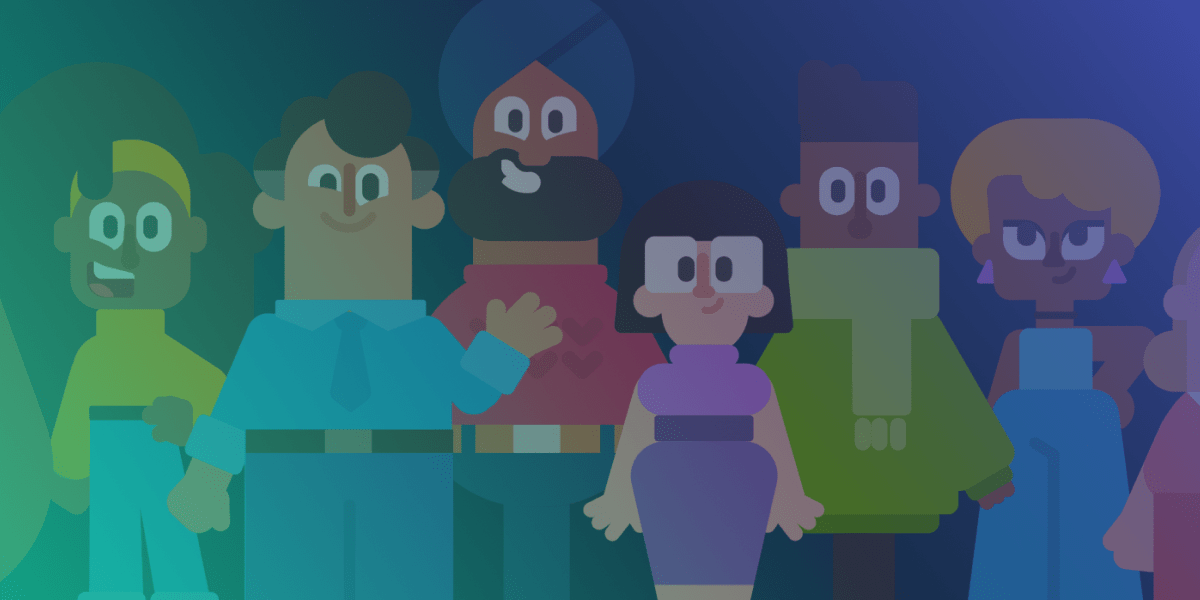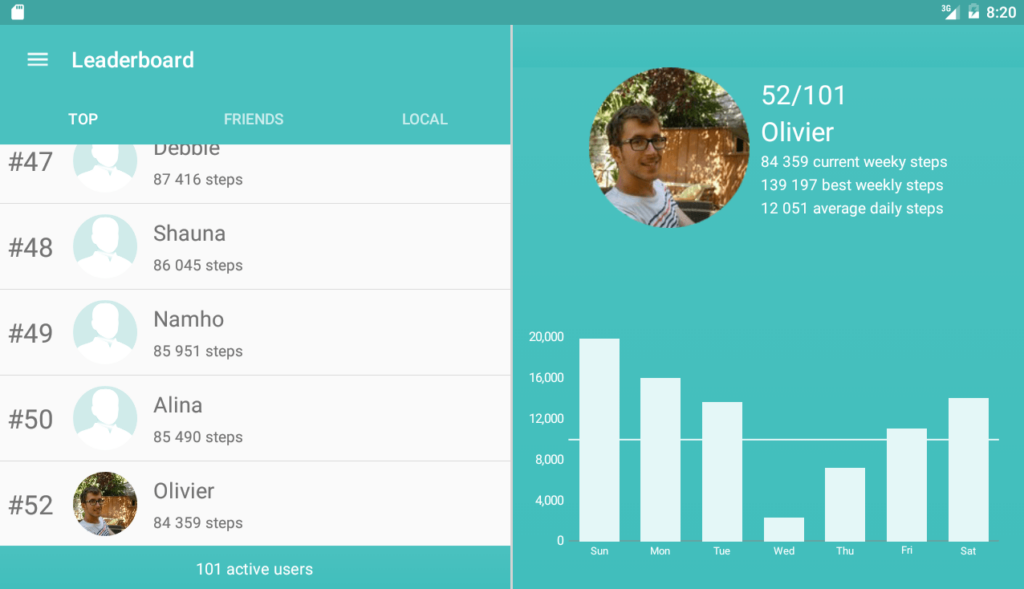
We learn by playing. When we enter the world, we’re full of curiosity, and play has always been at the centre of how we satisfy that curiosity. Sadly, it’s beaten out of us when we go to school, and taking tests suddenly becomes a chore. But it doesn’t have to be. It’s possible to learn while having fun. In fact, that’s exactly what some apps are doing. And it’s working.
Games are the most popular genre on the app store. They’re masters in the art of keeping users engaged and happy. So how can we learn from them?
What is gamification?
You’ve probably heard the term ‘gamification’ before. But if you haven’t, it’s the act of taking gaming elements and mechanics and applying them to your non-gaming app. Often to ramp up retention and engagement.
And it works. If we look at the stats, gamified learning is expected to be valued at $25.7B by 2025. And 90% of employees claim that they’re more productive when gamification is involved. It’s a trick plenty of brands and developers have adopted to make their apps stand out from the rest.
How does gamification help?
It makes whatever you’re trying to do, well, fun. Gamification can appeal to a few different motivations – our curiosity, our competitive side, and our sense of achievement. Take that away, and you’d be removing potentially any flavor from your gourmet dish, and serving up a cold soup.
By ‘gamifying’ your app, you’re giving your audience a reason to stay. You can use it to entice and motivate your users, which can increase your engagement, retention, session length, organic installs and brand loyalty.
So what techniques can you use for your own apps?
Add progression bars and levels
Great for fitness, health, and education apps.
Progression bars, levels and charts are brilliant for any app with ongoing goals. This is arguably the best way to keep people motivated and helps reward them for their progress. If you’re making a weight-loss app, waiting until they’ve lost 30lbs before you reward them makes it seem like an impossible task.

Any fitness or health apps are perfect here. Take FitXR as an example. While it’s predominantly a VR app, the developers have also created a mobile app version, so users can track their progress and plan their workouts.
But you could also expand this into other areas. Charts and graphs go hand in hand with financial apps, like Mint or Monefy. Especially ones which let the user set goals and spending limits.
Chuck in streaks
A must for any education or fitness apps.
How do you keep users coming back on a weekly, if not daily, basis? Streaks. Reward your users for building good habits and returning to your app daily. And if you add a feature which lets you compare streaks with their friends, they’ll have all the more motivation to come back.

Strava’s Streak feature lets users set challenges and goals while joining in on community set ones. This feature works so well because users can set weekly challenges and be rewarded for staying engaged and consistent with their training. Rather than on just a set number of steps or miles.

Duolingo is another great example here. And they’ve also layered in a premium feature – the ‘Streak Freeze’. It costs the player 200 gems, which they can earn either by playing and saving up over time, or by spending real-world cash.
Set up leaderboards and rankings
Great for fitness apps, but also educational ones.
Leaderboards and rankings appeal to our competitive nature. The act of seeing your own name lined up against those of your friends can be motivation enough to come back and spend more time in your app.

The obvious examples here are fitness apps. FitBit users can see how they line up against their friends and contacts. And this feature was so popular, that FitBit even released a separate app. They coined it ‘Leaderboard for FitBit’, where people can join global competitions, get access to more advanced features, and even taunt or cheer on their friends.
Create goals and objectives
Perfect for habit-forming, financial, educational and fitness apps.
We’ve all done it: set an unrealistic goal, only to get immediately deflated when you don’t achieve it, and you end up throwing that idea straight into the bin. But small goals and objectives can help users get a sense of achievement and keep them motivated to carry on.

Habitica is now boasting over 4 million people in its app. Users can set their own goals and tasks, and get rewarded once they complete them. The difference is those players use the gold and coins they earn to battle monsters and play games with their friends.
Mix in quizzes and puzzles
Perfect for any type of educational app.
We all love a good quiz. Testing our knowledge is not only a great way to solidify what we’ve learned, but again appeals to that competitive desire we all have (whether that be against someone else or our past selves).

Look at Codecademy. This interactive learning portal encourages engagement, and constantly quizzes users on their knowledge. And at no point does it feel mundane or forced (unlike some of the pop quizzes we’ve all had at school).
A good rule here is to keep them short and snippy. Unless this feature is baked into your core and players expect it, no one wants to sit around for half an hour doing an intensive quiz. Your users will get demotivated and bored.
Set a currency and give extra lives
For every lesson your complete, every quiz you nail, and every streak you keep up, you earn in-app currency (gems and lingots). You can use these on all kinds of things – lives, items, streak freezes and more.

Not only does this keep your user interested, but you can also use this as a great way to monetize your app and encourage spending. As long as you have something worthy to offer. If not, we’d recommend maybe making money in other ways.
How to gamify your app
Hopefully you’ve seen enough examples to get your creative juices flowing. But before you start planning away, here are some of our top tips when adding gaming elements to your apps.
- Define your goal: Think about what your objective is here – what is it that you’re trying to achieve? Figure out which features help reach that goal and focus on them first.
- Keep it simple: You don’t want to add too many ingredients to the mix. Otherwise, you’ll have an overcomplicated app which confuses your users. Do you really need an in-app currency? No? Then cut it out.
- Make it social: A core element of gamification is that competitive edge. Letting your audience be able to pit themselves against their friends is a great incentive to keep them in your app. And you won’t be the only one encouraging them to keep playing.
- Test what works: Try not to add new features in willy-nilly. Do some market research and test if a new feature or mechanic will work with your audience. It’s a safe way to release something new without frustrating your current users.
- Most importantly, keep it fun: That’s what we’re trying to do here. Take something boring and turn it into a game.
Track your app’s performance
We’ve created our platform to be the best analytics tool for games, with dashboards designed to track specific metrics for core gameplay. But it also works for gamified apps, too. You can track a whole range of different events to see whether people are completing your quiz or quitting your app – which can help you learn if you have any bugs lurking around, or if your features need a bit of work.
So if you haven’t done so already, sign up for free to get started today.